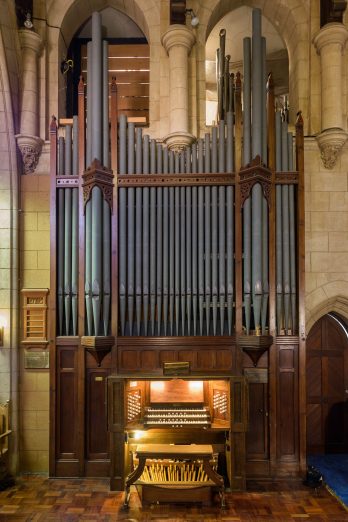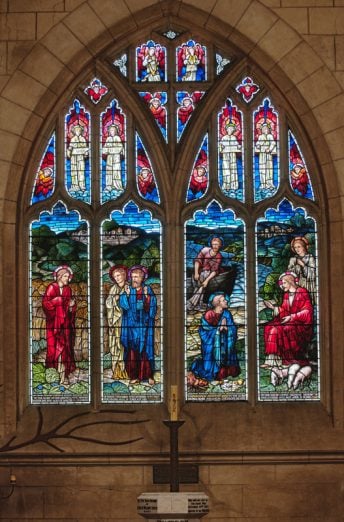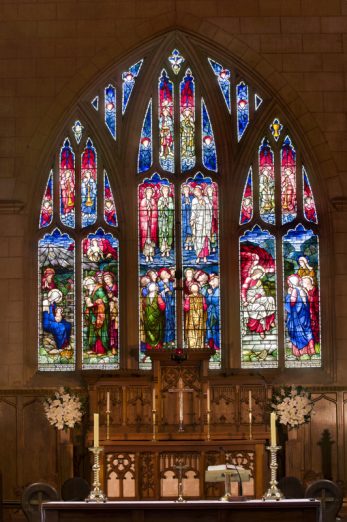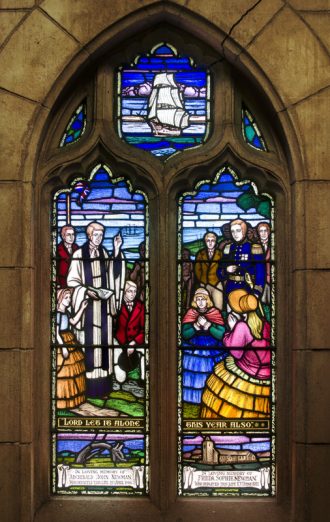The National Trust St Augustine’s Conservation Fund Appeal
History of the William Morris windows
The replacing of an old church with a new one was a rare event, however the new St Augustine’s Church, designed in a traditional Gothic style, was dedicated on 28th August 1924. Under Reverend Edward Fernie parishioners furnished the new church, and some chose William Morris lead light windows.
William Morris a designer, craftsman and decorator, is considered amongst the greatest pattern makers of all times. His highly skilled group produced superior stained glass.
St Augustine’s Unley 14 significant William Morris stained glass windows, of which 12 were made at the premises of Morris and Co, at the Merton Abbey Works, London. These windows were all donated between 1928 and 1948, many donations by founding colonists or their children. The stories in these windows depict these colonists’ endurance, commitment and passion, not only for life, but for their faith.
Over time, heat and direct sunlight remove the linseed oil from the putty, it becomes powdery and cracks in the putty appear on the external face of the window. The powdery putty is no longer water proof and rain water seeps through to the internal side of the window.
The task ahead
After 93 years, the putty is no longer water proof and these magnificent William Morris windows have begun to buckle in their casements. To preserve these windows, your donation will support their urgent restoration.
History of the organ
St Augustine’s role in the community, as a place of worship and a venue for civic and musical events has been enriched by the J C Bishop and Sons organ.
At a meeting on 2 July 1930, it was unanimously decided to purchase the J C Bishop and Sons organ, which was, at the time, in St Peters Cathedral. J C Bishop and Sons founded in 1795,were known as master organ builders. Their attention to detail and expert knowledge, combined with ingenuity and craftsmanship, produced some of the finest English organs of the nineteenth century.
The present organ was built in 1877 in London. Before being installed the organ was modernised. The original mechanical action was replaced by electro pneumatic mechanism by Hill, Norman and Beard. The pipe work has been left as voiced by Bishop and Sons .
In 2001 storm damage made the organ unplayable. This necessitated extensive repairs by Leith Jacobs of Adelaide.
The organs contain 1920 pipes, the largest being the Pedal Open Diapason 16 feet long ( 488 cm), the smallest a small metal pipe just a few inches long (61cm).
The task ahead
Age is catching up with the organ and a comprehensive restoration, focusing on preserving the original tonal scheme and enhancing the mechanical aspects of the organ with modern aids, will ensure improved action response, ongoing reliability and tuning stability. Your donation will support these imperative restorations.
St Augustine's Unley Anglican Church
St Augustine's Unley Anglican Church
appeals@nationaltrustsa.org.au








